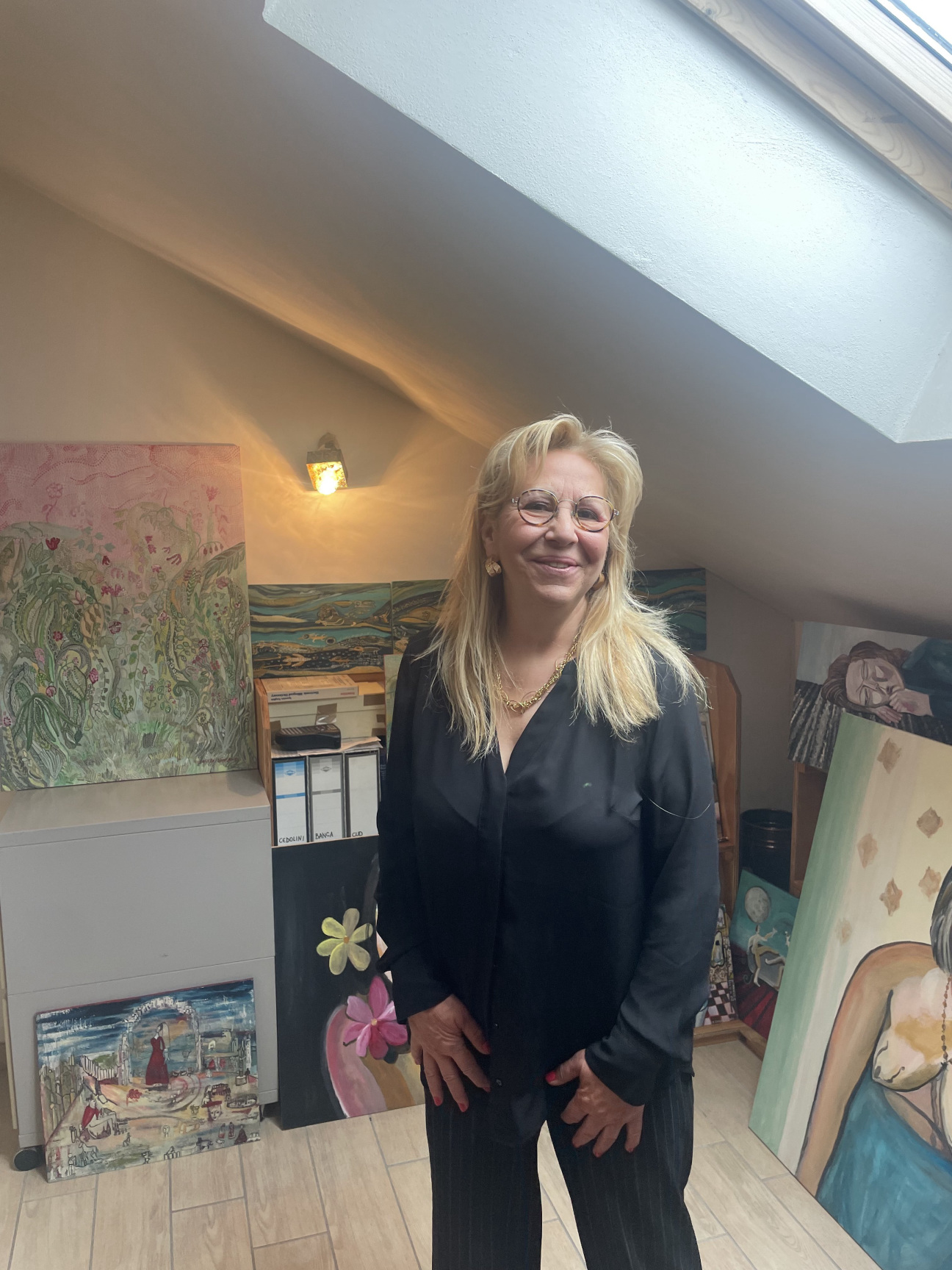
Blame it on Instagram.
I stumbled across the quirky paintings of Elisabetta Zangrandi while scrolling through Instagram one sleepless night years ago. We started a casual dialogue that felt more like a strange series of messages in the proverbial bottle, notes that would arrive in my DMs with images and thoughts at random moments. I was enchanted by Elisabetta’s paintings; the first of her motifs that really touched me the pietà, which she painted diminutively on dishtowels, hand stitched and stretched over panels. (I have written extensively on my collapsed Catholicism and how it has cultivated my first love of primitive Flemish religious paintings.)

Over the years, Elisabetta would send me images of new works, and we would keep up our correspondence. When I first saw her version of Las Meninas, I understood her art historical homage as a veiled self-portrait. I invited her to show one of these works as part of my group exhibition "Pictures Girls Make: Portraitures" this past fall. The art historical thread of artist-women and their groundbreaking self-representations—going back five centuries—was one of the touchstones of this project and a subject that preoccupies much of my current research.
After "Pictures Girls Make," Elisabetta and I continued our Instagram correspondence, and the notion that she might revisit some of the great palette-portraits of past centuries was something she immediately seized upon. A mere few days later, the first of 15 images arrived in my DMs: Artemisia Gentileschi, depicting herself as the Allegory of Painting, appeared on my screen.
This 17th century self-portrait, which I consider to be an icon of Old Mistress painting, had been revisited with Zangrandi’s distinctive hand. Transforming the Baroque drama with a new verve, Zangrandi made new this powerful image of artistic autonomy by injecting her deceptively fanciful and innocent style. A tiny horse, swirling fauna, and a dream-like interior fill the backdrop, erring from Gentileschi’s original source image.

Each portrait that arrived in my DMs in the following weeks amazed me. Zangrandi forged her own musée imaginaire—André Malraux’s notion of an impossible, imaginary collection. It was my art historical dream come true.
I would conjecture that the palette portrait was invented out of necessity in 1548 when a young Flemish artist, Catharina, asserted herself as an artist in her own right after having been trained in her father’s studio. As a calling card-meets-manifesto, the genre of the palette portrait, as practiced by women, is an emblem of agency and power.
Elisabetta Zangrandi takes up this mantle in her own series of portraits that both play homage to those who paved the way for her and find her inhabiting each image as a sort of likeness of herself. It is fitting that we dedicate this exhibition to the early 20th-century artist Paula Modersohn-Becker, who wrote in her diaries, “I feel that the time is soon coming when I no longer have to be ashamed and remain silent, but when I feel with pride that I am a painter."
"Elisabetta Zangrandi. Musée Imaginaire" is on view at Keyes Art in Sag Harbor from May 11 through June 26, 2024.










 in your life?
in your life?

